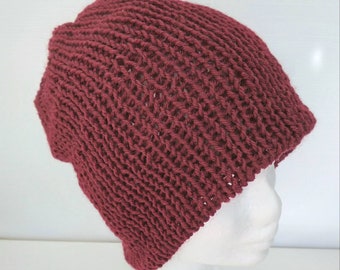

They could inform the development of clinical practice guidelines, which could increase access to cochlear implants worldwide and improve hearing and quality of life in eligible adults. The consensus statements provide recommendations on the use of unilateral cochlear implants in adults with bilateral severe, profound or moderate sloping to profound sensorineural hearing loss. What was the goal of the consensus paper?Ĭonsensus statements were developed regarding the use of unilateral cochlear implants in adults with severe, profound or moderate sloping to profound bilateral sensorineural hearing loss. The aim of this paper is to describe the findings of the Delphi consensus study on cochlear implant use in adults and to present the resulting consensus statements agreed by the Delphi panel.ĭELPHI GROUP: Craig A Buchman MD, René H Gifford PhD, David Haynes MD, Thomas Lenarz MD, Gerard O’Donoghue FRCS, Oliver Adunka MD, Allison Biever AuD, Robert Briggs FRACS,8 Matthew L Carlson MD, Pu Dai, MD, Colin Driscoll MD, Howard W Francis MD, Bruce Gantz MD, Richard K Gurgel MD, Marlan Hansen MD, Meredith Holcomb AuD, Eva Karltorp MD, Milind Kirtane MS ENT, Jannine Larky AuD, Emmanuel Mylanus MD, J Thomas Roland Jr MD, Shakeel R Saeed MD, Henryk Skarzynski MD, Piotr H Skarzynski MD, Mark Syms MD, Holly Teagle AuD, Paul Van de Heyning MD, Christophe Vincent MD, Hao Wu MD, Tatsuya Yamasoba MD, Terry Zwolan PhD.
#Kanso 2 headband series#
The aim of the group was to use a modified Delphi method to develop a series of consensus statements regarding the use of unilateral CIs for treating bilateral severe, profound or moderate sloping to profound sensorineural hearing loss (SNHL). Brian Kaplan, Senior Vice President of Clinical Strategy & Innovation at Cochlear Unilateral Cochlear Implants for Bilateral Severe, Profound, or Moderate Sloping to Profound Sensorineural Hearing Loss: A Systematic Review and Consensus AuthorsĪn international group of clinical experts in the fields of otology, audiology and hearing science, all with extensive clinical and scientific experience of cochlear implantation, were brought together to form a Delphi panel. If you have had an experience with your cochlear implant headpiece and found other signs that you feel will help other CI recipients and their families, we invite you to share them here.By Dr. After examining all the equipment, magnet strength, etc., we made an appointment with the audiologist, who found a problem with the map which caused the over stimulation.

He would deliberately swipe it off his head, clearly indicating he didn’t want it on.


When our son was around 24 months old, he wouldn’t wear his headpiece. Troubleshoot your CI equipment and check with your audiologist about the sound processor and map.
#Kanso 2 headband skin#
Consult your audiologist about adjustments to the magnet strength.Īlso please note that if there are no noticeable skin irritations and your child is having issues wearing his/her headpiece, it could be an indication that other possible problems exist. If you start to see scabbing at the connection point, you should definitively consider removing the headpiece for a while until the skin heals. Here are some signs we discovered when the magnet strength was too strong skin irritation such as redness, swelling, tenderness at the connection point on the head behaviors like scratching, rubbing or frequent removal of headpiece. We changed the magnet strength and left his headpiece off for the night and fortunately the next morning the skin looked much better. If not addressed, this skin irritation might have led to an open sore…keeping my son from wearing his processor. As you can see from the photo, the skin is clearly irritated. My son didn’t say anything, nor did he complain. After a day, his head became red and itchy. Here’s what happened after we accidentally got my son’s headpieces mixed up and put the wrong magnet strength on the wrong side of his head. Unfortunately, the error part of the process can cause problems that can prevent you or your child from wearing your processor for a period of time.Īs parents, we need to look for signs our child’s headpiece magnet may be too strong before there’s an obvious problem, especially if your child is nonverbal.
#Kanso 2 headband trial#
Signs Cochlear Implant Headpiece Magnet Strength Is Too StrongĪs a follow-up to my last blog post, “What is the Right Magnet Strength for My Cochlear Implant Headpiece?” I wrote how finding the right magnet strength is a trial and error process.


 0 kommentar(er)
0 kommentar(er)
